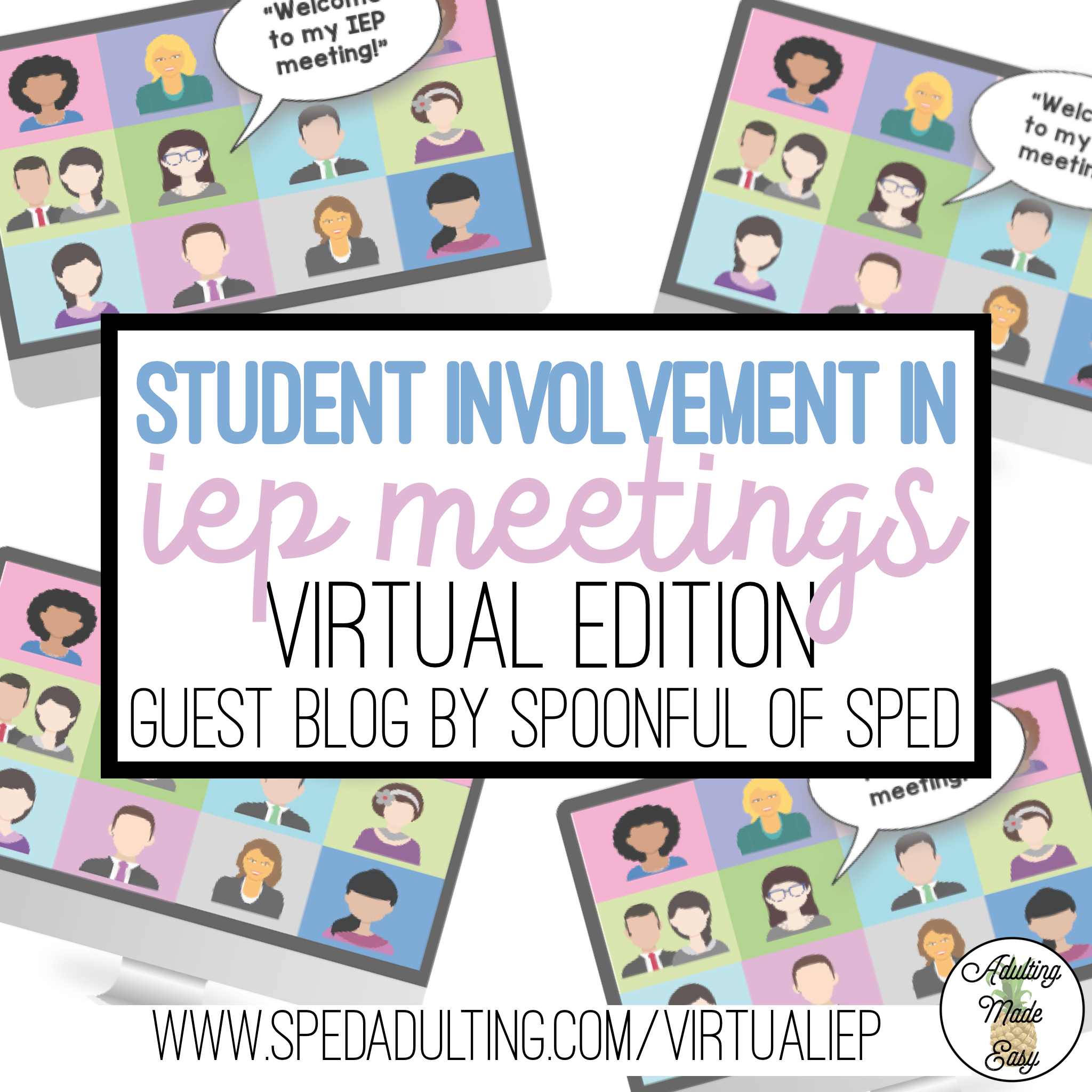Alright, stop, collaborate, and listen! IEPs back with a brand new vision.
Featured Guest Blogger: Maureen Howard, M.Ed. from Spoonful of Sped

We should be thinking about the IEP process and transition planning with this spin on Vanilla Ice’s lyrics in mind. Too often, students with disabilities are left out of the IEP process. This can lead to poor post-school outcomes. When students do participate, there are benefits like increased self-determination and self-advocacy skills. Plus there’s nothing that beats their proud smile after a job well done!
But how can we do this?
You might be thinking “I don’t know where to start” or “I’m so busy, I don’t have time”, or maybe “This is even more confusing given the virtual environment”.
Typically, when you support students participate in their IEP meetings under “normal” circumstances, you probably create some sort of presentation to share with the team at the meeting. Through PowerPoint or even low tech poster board or a colorful piece of paper with some visuals, students communicate the essential components of their transition plan, like their interests, strengths, job experiences, and career goals.
Digital IEP Transition Notebooks
In the age of virtual or hybrid learning, this same idea can be implemented using a collaborative slide deck where together teachers and students co-create a presentation for the student to show off during a virtual meeting. Gotta love that screen share feature- am I right?
I made a Digital IEP Transition notebook for students to use to take ownership of their transition plan in a digital landscape and contribute meaningfully to their meetings. This tool includes 5 different sections for students to add to.

On the team member page, there is space for you and your student to add pictures and names of the different team members. Before the meeting, shoot the team members an email to ask for their pictures. Email the family too and see if they have fun pictures to add. This is an easy way to also build family to school partnerships. Plus, having these pictures will help students facilitate introductions at the start of the meeting. Everyone loves getting to get a shout out, don’t they? Here’s an example:

Next is the interests page. Here is where students could insert text boxes to list some of their favorite people, places, and things. Students could also search the web for pictures of these and directly insert them on the slide. Here’s one I made as an example for my students all about my interests (yes, I put Netflix on there ☺).

For the strengths page, students and staff can work together to identify things that the student rocks at and either type those into the boxes provided or add pictures of these skills. What would be really awesome is adding real pictures of the students actually doing these things to show off the skills they’ve worked so hard to grow in.

Then, there’s a special section just to illustrate the cool places they have worked at. This can include previous job sites, whether that is out in the community or jobs they have done within their school building. I’ve included check marks and Xs for students to drag over the various jobs to communicate what they thought about that job. This is an easy, low impact way of describing the ideal places of employment for the student. Check out a mockup I made for one of my students.

Finally, I included a career goals page. This is where the student can detail what their dream career goals are. This could be goals for this specific year, or longer-term post-secondary goals. Depending on the student, you can duplicate this slide and add different headers to cover all types of career goals. I whipped up a slide to model a career goal based on my own aspirations.

So what’s next?
Whether this tool suits you or you make your own, finding creative ways to involve students in the development and sharing of their transition plans is powerful and can generate confidence and communication skills. The virtual setting is no different. So don’t overthink it- you totally have this!
Here’s where you start: Start with getting the student pumped for the IEP meeting and send them a personalized invitation. Download this FREE version and pop it into an email or actually mail it to the student’s house. Then set up a time to work with the student and make an awesome presentation for them to share at their meeting.
Keep finding ways to put the student at the center of the IEP and transition process. And before your next IEP meeting, I want you to think about finding ways to stop doing the plan for them, collaborate with the student to co- create something awesome, and listen up to what they have to share. ☺

You might enjoy reading:






How do I get the Transition Notebook? It looks amazing!
Hi Jean,
If you head to the FREEBIE link mentioned in the blog post, it will take you to the guest blogger’s TPT store, which has the Transition Notebook.